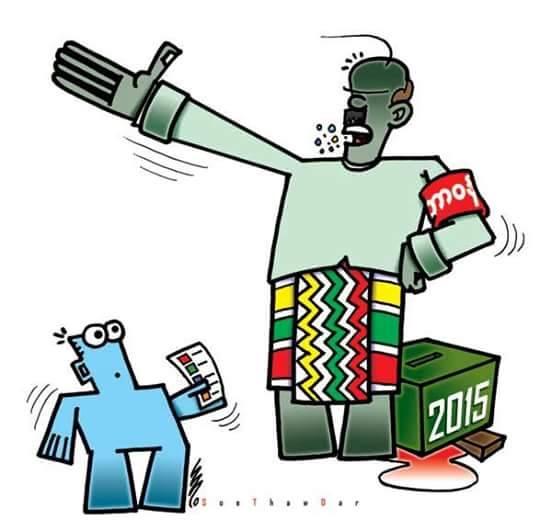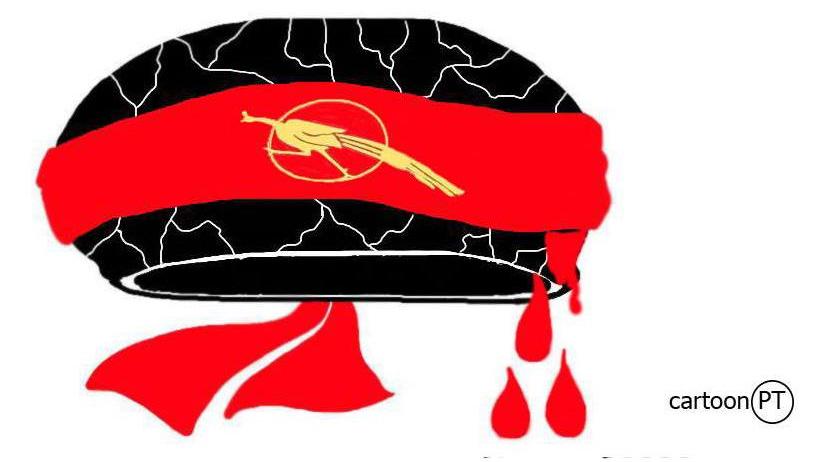Cartoon posted to NyanHline's Brainwave Facebook page, which is devoted to expressions of protest over the violence directed at Burmese students carrying out a 400-mile march from Mandalay to Yangon. The peacock is an image that goes back to the 1988 protests in Burma.
If you can't arrest the thugs, at least you can shame them. That seems to be the idea behind Brainwave, a Facebook page devoted to documenting the violence directed at student protesters in Myanmar over the past several months. And the preferred weapon? Cartoons.
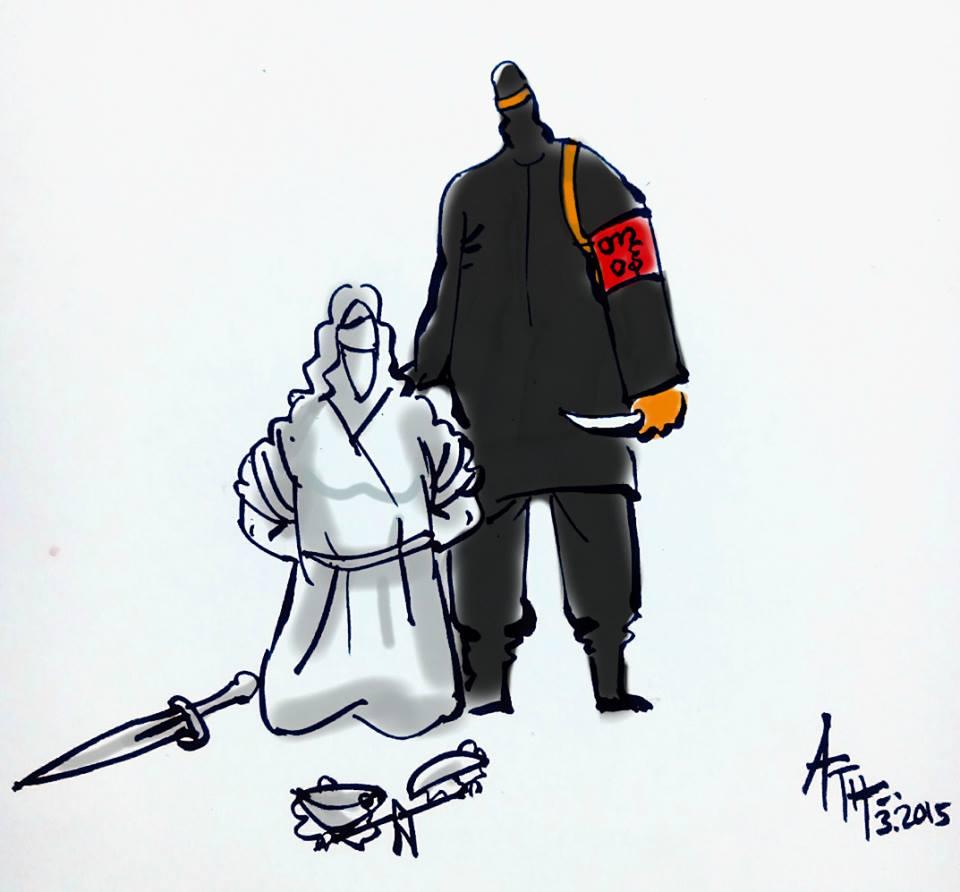
But it was the re-emergence of the Swam ar Shin, wearing their trademark red armbands with inscriptions that read "On Duty," that truly alarmed observers. "Swam Arshin" literally means "power owner," and previous military governments used them to suppress dissent, offering poor men a day's wage for their service. The Swam Arshin were instrumental in the violent crackdown on protesters during the 2007 Saffron Revolution.
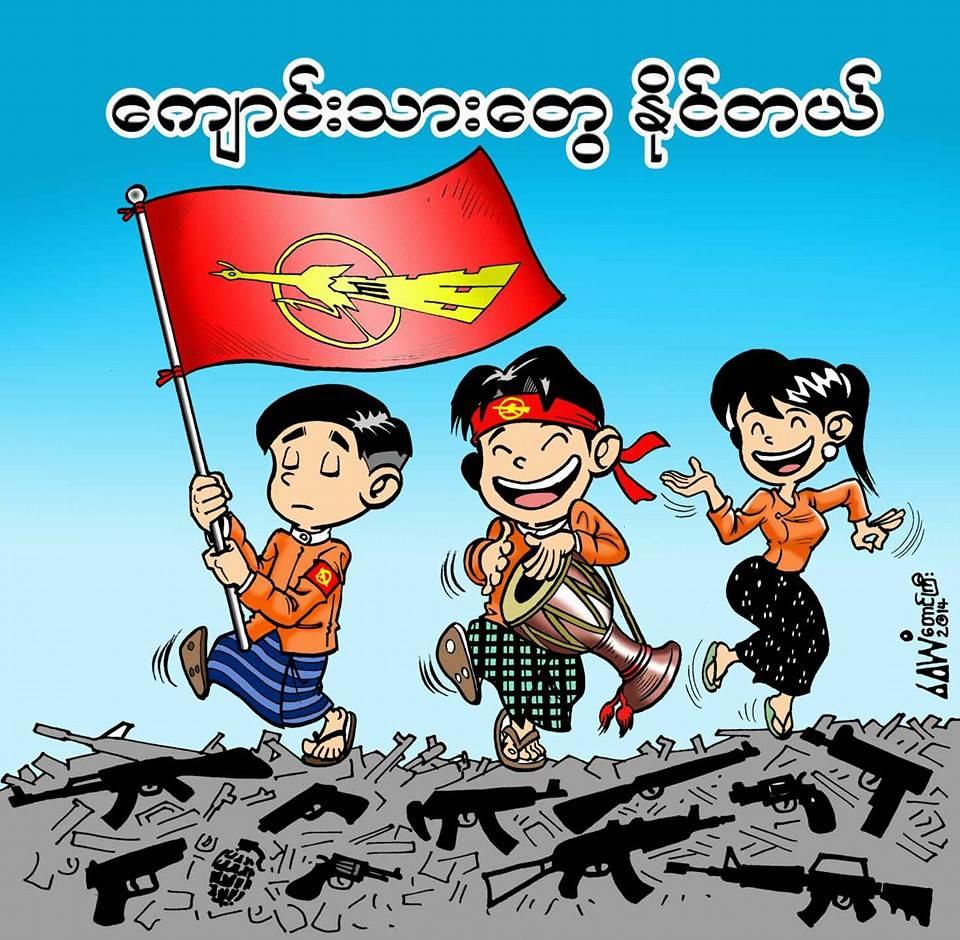
This time, the students are trying to influence a particular piece of legislation passed by the country's first civilian government in almost 50 years. With Myanmar's oppressive military junta gone, the students are demanding a say in the transition to a real democracy.
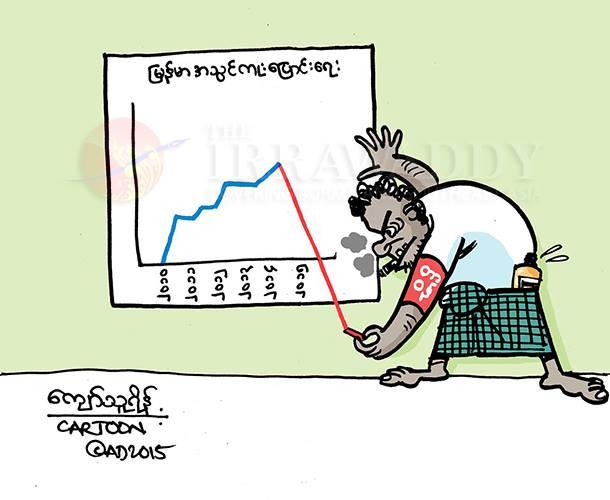
Negotiations between students and government representatives broke down last week, and so did the 400-mile protest walk. Just 90 miles from Yangon, in the town of Letpadan, police blocked the protesters with barbed wire and barricades, and also barred them from hoisting flags or singing songs. The protesters tried to break through the police lines and were then attacked, according to reporters on the scene. More than a hundred protesters were arrested and about a dozen were injured.
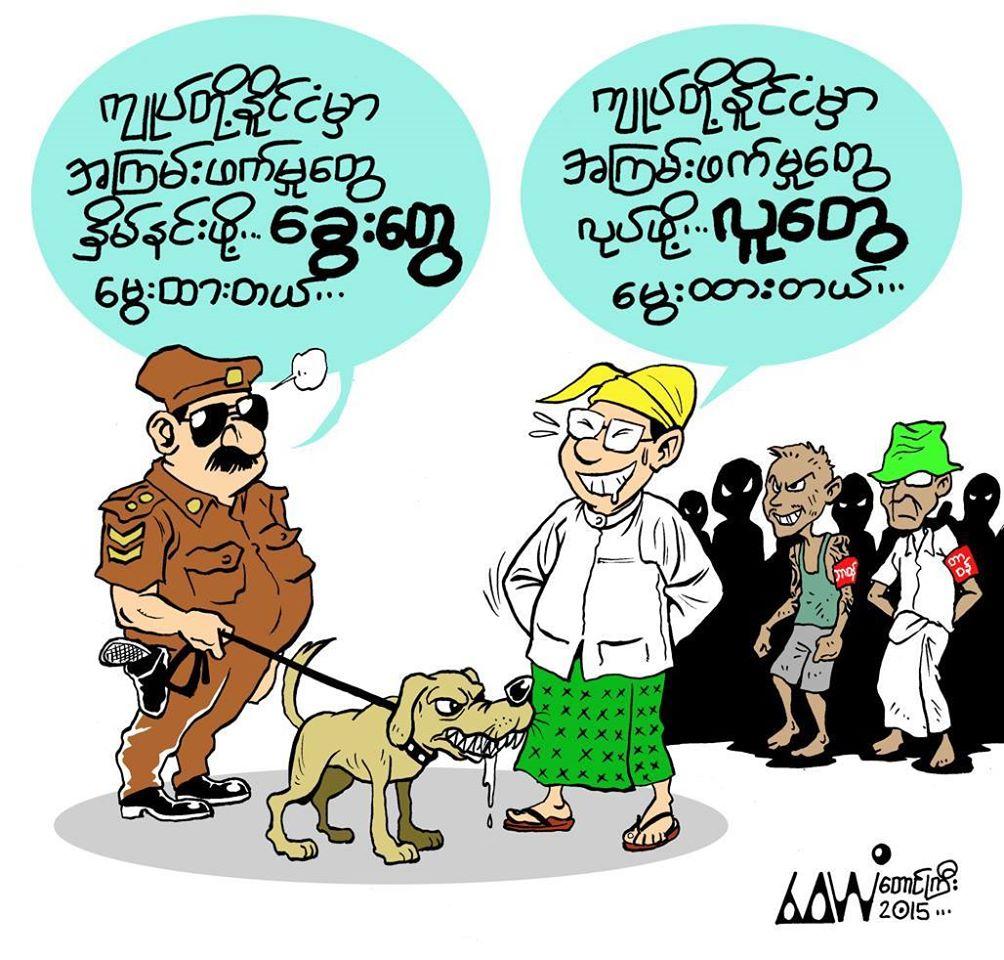
Long-time observers believe the current government has no intention of transitioning to a genuinely democratic state — because it doesn't have to. As it watches authoritarian countries like Singapore, Thailand, Vietnam and China welcome foreign investment without giving up political control, they say, Myanmar will probably follow a similar path.
